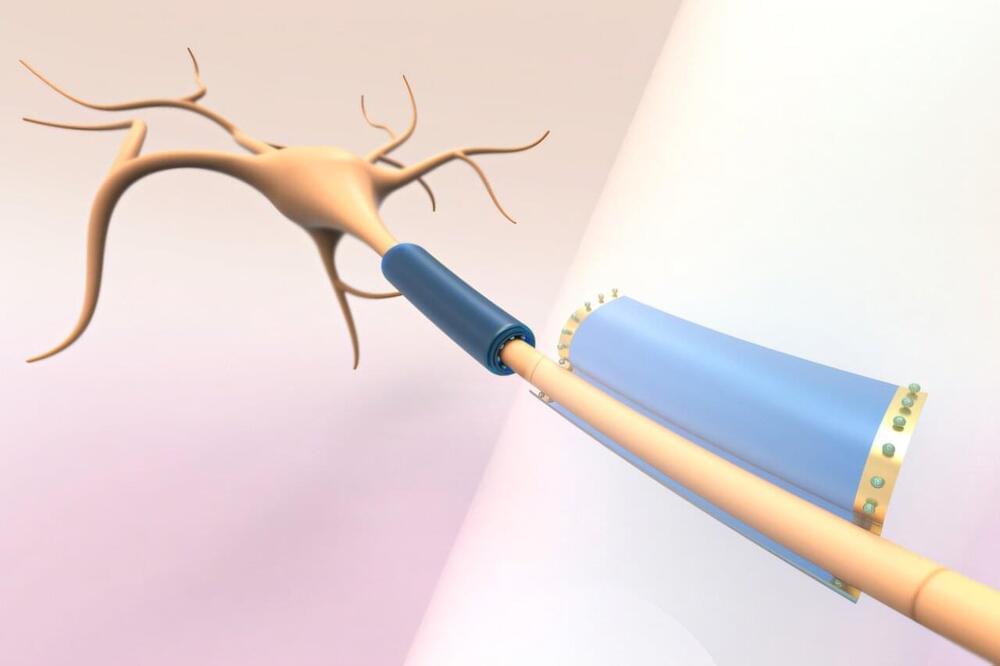MIT researchers have developed a battery-free, subcellular-sized device made of polymer designed to measure and modulate a neuron’s electrical and metabolic activity. When the device is activated by light, it can gently wrap around the neuron cell’s axons and dendrites without damaging the cells.
Scientists want to inject thousands of these tiny wireless devices into a patient’s central nervous system and then actuate them noninvasively using light. The light would penetrate the tissue and allow precise control of the devices, and thereby restore function in cases of neuronal degradation like multiple sclerosis (MS).
The MIT researchers developed these thin-film devices from a azobenzene, a soft polymer that readily reacts to light. Thin sheets of azobenzene roll into a cylinder when exposed to light, which enables them to wrap around cells. Researchers can control the direction and diameter of the rolling by changing the intensity and polarization of the light, producing a microtube with a diameter smaller than one micrometer.








